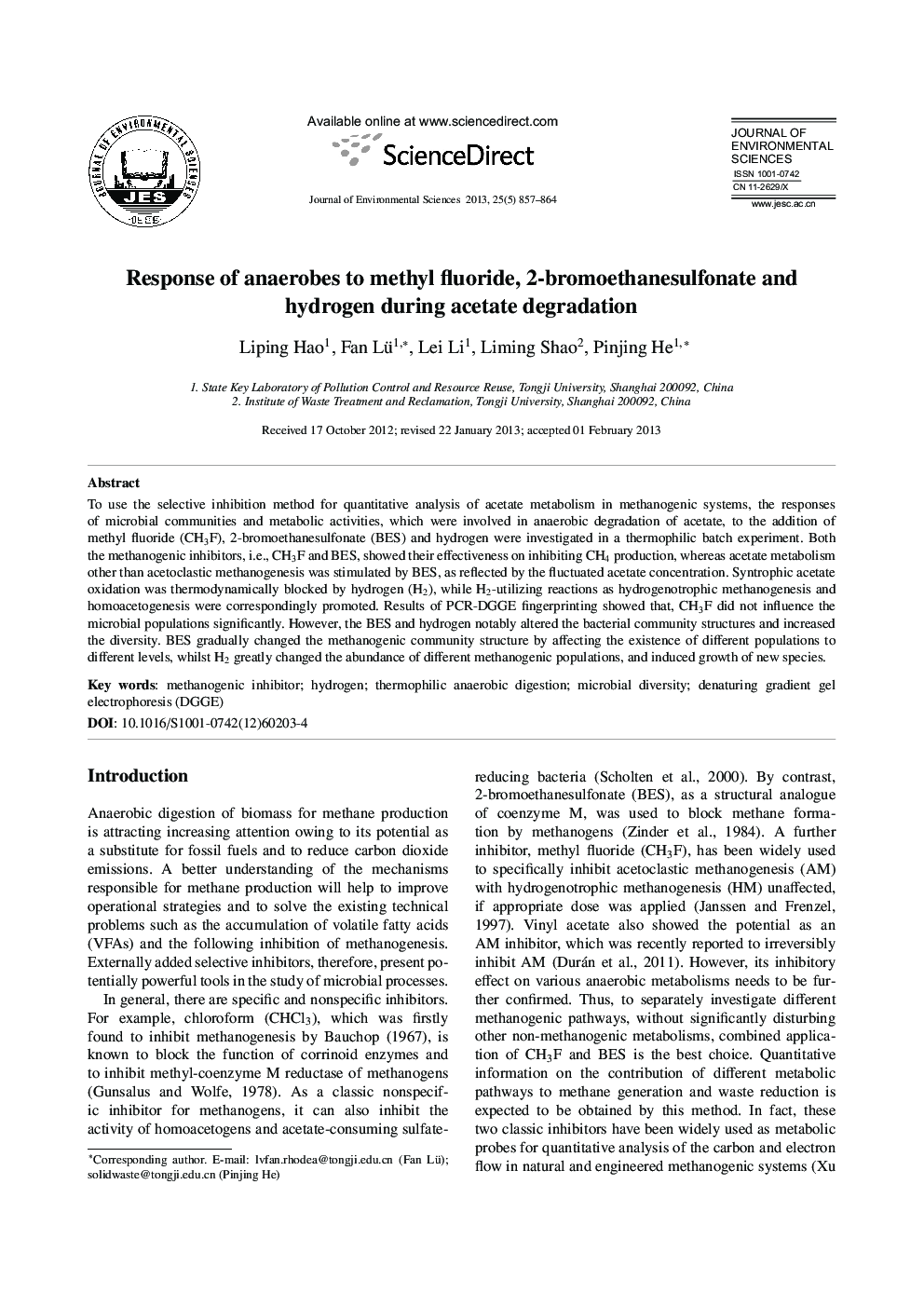| Article ID | Journal | Published Year | Pages | File Type |
|---|---|---|---|---|
| 4454728 | Journal of Environmental Sciences | 2013 | 8 Pages |
To use the selective inhibition method for quantitative analysis of acetate metabolism in methanogenic systems, the responses of microbial communities and metabolic activities, which were involved in anaerobic degradation of acetate, to the addition of methyl fluoride (CH3F), 2-bromoethanesulfonate (BES) and hydrogen were investigated in a thermophilic batch experiment. Both the methanogenic inhibitors, i.e., CH3F and BES, showed their effectiveness on inhibiting CH4 production, whereas acetate metabolism other than acetoclastic methanogenesis was stimulated by BES, as reflected by the fluctuated acetate concentration. Syntrophic acetate oxidation was thermodynamically blocked by hydrogen (H2), while H2-utilizing reactions as hydrogenotrophic methanogenesis and homoacetogenesis were correspondingly promoted. Results of PCR-DGGE fingerprinting showed that, CH3F did not influence the microbial populations significantly. However, the BES and hydrogen notably altered the bacterial community structures and increased the diversity. BES gradually changed the methanogenic community structure by affecting the existence of different populations to different levels, whilst H2 greatly changed the abundance of different methanogenic populations, and induced growth of new species.
